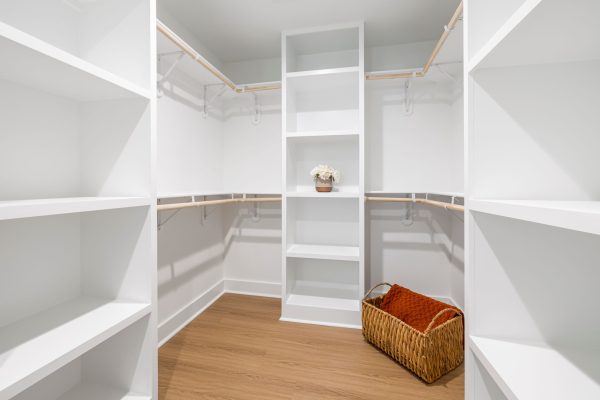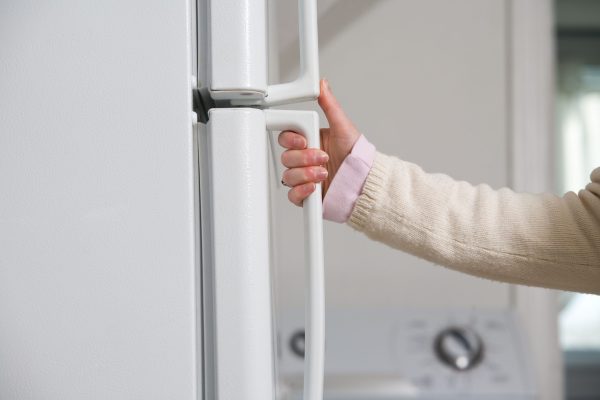The environment that Kombucha ferments in plays a major role in the success and hygiene of your Kombucha during the fermentation process. Kombucha can easily be fermented in different parts of the home like the kitchen, basement, and even inside your good old closet. However, you must take note to only brew your Kombucha in the best possible environment to achieve brewing success.
So where should you brew Kombucha? First off, you should leave your Kombucha fermenter in a dry place away from moisture buildup and toxic chemicals. You should also keep your brew away from direct sunlight and your other fermentation projects. Additionally, the fermentation space should be able to maintain the right temperature for brewing. You will also need to consider fermenting your Kombucha in a well ventilated particularly during the first fermentation.
If it’s your first time setting up a fermentation station, you are probably getting confused with the overwhelming amount of information out there. Don’t worry because we got you. Today, we will be explaining how you can set up your own fermentation station at home. The complete detail will also answer some of your most commonly asked questions about where you should brew your Kombucha.
Table of Contents
What to Avoid When Brewing Kombucha?
When brewing Kombucha, you should pick a good location that can keep your culture healthy and active. Brewing your Kombucha in an improper fermentation spot can lead to inactivity of the culture, contamination, or longer fermentation time.
It is easy to set up your fermentation station. Here are the things that you should look for when choosing the best location for brewing your Kombucha at home.
- Dry and away from molds
Make sure that your fermenters are kept in a dry place so you can prevent moisture buildup. Storing your Kombucha in a place that often gets wet can provide moisture. These molds can grow and develop. When there is the presence of mold near your fermentation station, your Kombucha can get contaminated easily.
Keeping your Kombucha in a place with relatively high humidity is also not ideal. This is due to high humidity which means that there is a high level of moisture in the air. The moisture in the air makes it easier for molds and mildew to grow.
Some of the places you should avoid for brewing your Kombucha are near leaks in roofs, windows, and pipes,. You should also areas where there has been flooding.
How to Avoid Contamination While Brewing Kombucha?
- Away from contaminants
Your SCOBY can absorb the bacteria, chemicals, and odors from various contaminants in your house. These contaminants include:
- Garbage
- Compost
- Cleaning products
- Air freshers
When your Kombucha brew gets exposed to these contaminants, it will be more vulnerable to damage. Garbage and compost can cause mold growth and contamination of your brew. The insects from these things can also affect the hygiene of your Kombucha. On the other hand, the chemicals from the cleaning products and air fresheners can damage or kill your SCOBY overtime.
- Away from plants
As much as we love having our plants around the house, brewing Kombucha near one is not the best thing to do. Plants can house different insects and bacteria than can contaminate your Kombucha brew. Additionally, it can also cause mold growth because the soil can trap water and moisture.

- Away from other fermentation projects
If you are having various fermentation projects at the same time, remember to always keep your fermenters apart. This is because different kinds of ferments can have different strains of yeast. Bacteria can also affect each other’s activity and fermentation process.
To continue fermenting various fermentation projects, we highly recommend having at least 5 ft. distance between your fermenters. You may also opt to brew your fermentation projects in separate rooms to make sure that there is no contact between the microorganisms.
- Away from direct sunlight
The direct sunlight can cause temperature inconsistencies. Nourished Kitchen blog explains that fermenting your Kombucha under direct sunlight can cause inconsistent temperatures. It also make the brew an inhospitable environment for the Kombucha culture to grow.
A fermenter with unstable temperature is a harsh environment for bacteria and yeast to thrive in affecting the culture’s health and energy. When this happens, the speed of fermentation can slow down or stop completely.
You don’t need to completely keep your Kombucha in the dark, you just need to make sure that your sunlight doesn’t reach your brew. If you are brewing in places with light like your kitchen counter, you can just simply move your fermenters to the sides and cover them with cloth.
Where Should You Brew Kombucha?
- Right brewing temperature
The temperature where you brew your Kombucha is important. Keeping your brew in a too cold environment can inhibit the fermentation while too warm temperature may speed up fermentation and cause your Kombucha to over-ferment faster.
Whether you are doing first, second, or third fermentation, your Kombucha brew should be kept at temperatures between 60℉ to 85℉.
To help you choose a fermentation spot faster, here is a tip for you. If your house has a warm temperature, you can choose places like a cupboard or closet and pantry. In a house where temperature is naturally cool, you can usually find a warm spot in the basement, laundry room, or near the fridge and heater.
If you are still having difficulties finding an area with the right temperature, you may opt to buy heating equipment like a heat mat to maintain your Kombucha’s temperature. You should also check the temperature regularly to make sure that it is consistent.
- Good ventilation
This is particularly important if your brew is undergoing first fermentation. The bacteria in the first fermentation of Kombucha need oxygen to ferment. Keeping your first fermentation brew in a place without good ventilation can inhibit or stop the bacterial activity in the Kombucha affecting the overall fermentation process.
Despite needing air, you should still cover your Kombucha fermenter’s mouth with cloth. It prevents insects from entering your brew. Cloth can also allow the microorganisms to have some air and ferment properly.
Where Do You Keep Kombucha For First Fermentation?
For first fermentation, you should keep your Kombucha in a place like the one discussed above. Again, here are the things that you should look for when deciding the best spot for fermenting your Kombucha.
- Dry and aways from molds
- Away from contaminants
- Away from plants
- Away from other fermentation projects
- Away from direct sunlight
- Right temperature ( 60℉ to 75℉)
- Good ventilation

Can I Brew Kombucha in a Closet?
The quick answer is yes. Brewing Kombucha in a closet is perfectly fine as long as the closet is dry and away from molds. When choosing the closet for fermenting Kombucha, take note to not choose a closet located near bathrooms with showers. Even if the doors are closed, the moisture from hot water can still humidify the closet making it a breeding ground for molds. Additionally, don’t use closets that are near any leaks in the house to avoid contaminating your brew.
A good closet for brewing Kombucha should also have the right temperature for brewing. Kombucha ferments best in warm temperatures. Unfortunately, closets tend to have a cool temperature because they are enclosed. Hence, before brewing your Kombucha in the closet, check the temperature first.
Is Kombucha Better Cold or Room Temp?
If your Kombucha is still fermenting, it is ideal to keep your Kombucha at room temperature regardless if it’s undergoing first or second fermentation. This temperature should be between the range of 60℉ to 75℉. If you keep Kombucha in a place with a cold temperature during its fermentation process, the Kombucha culture will become less active and slow down the fermentation process. In the brewing industry, this phenomenon is often referred to as hibernation or dormancy.
The only time when it’s better to store your Kombucha in a place with a cold temperature is when you have already achieved your preferred balance of sweet and sour. Kombucha doesn’t stop to ferment but cold temperatures can slow down the fermentation process. So when you are already satisfied with your Kombucha’s taste, store your Kombucha in a place with a cold temperature like the fridge immediately. This will allow you to preserve the perfect balance of sweet and tart for your Kombucha and prevent your Kombucha from turning to Kombucha vinegar.
Is Kombucha OK Unrefrigerated?

If you are still brewing Kombucha, then it is entirely OK to keep your Kombucha unrefrigerated. However, if your Kombucha has already finished its fermentation and you have achieved your preferred balance of sweet and tart, not refrigerating it will make the fermentation process continue.
When the fermentation process goes on, your Kombucha will be over fermented and can taste too strong for regular consumption.
Over fermented Kombucha is often referred to as Kombucha vinegar. Despite the strong taste, Kombucha vinegar is still safe to drink whether it is refrigerated or not, however it won’t taste as good as it should be.
When it comes to bottled Kombucha, it is not OK to keep it unrefrigerated for a long time. If your bottled Kombucha continues to ferment, producing more carbon dioxide and pressure in the bottle, your bottled Kombucha can explode.
On the other hand, if you keep an opened bottle of homemade or commercial Kombucha unrefrigerated, it can lose its fizziness instantly and taste flat. Although it is still OK to drink and you will not likely experience any adverse effects, the drinking experience will certainly be different.








